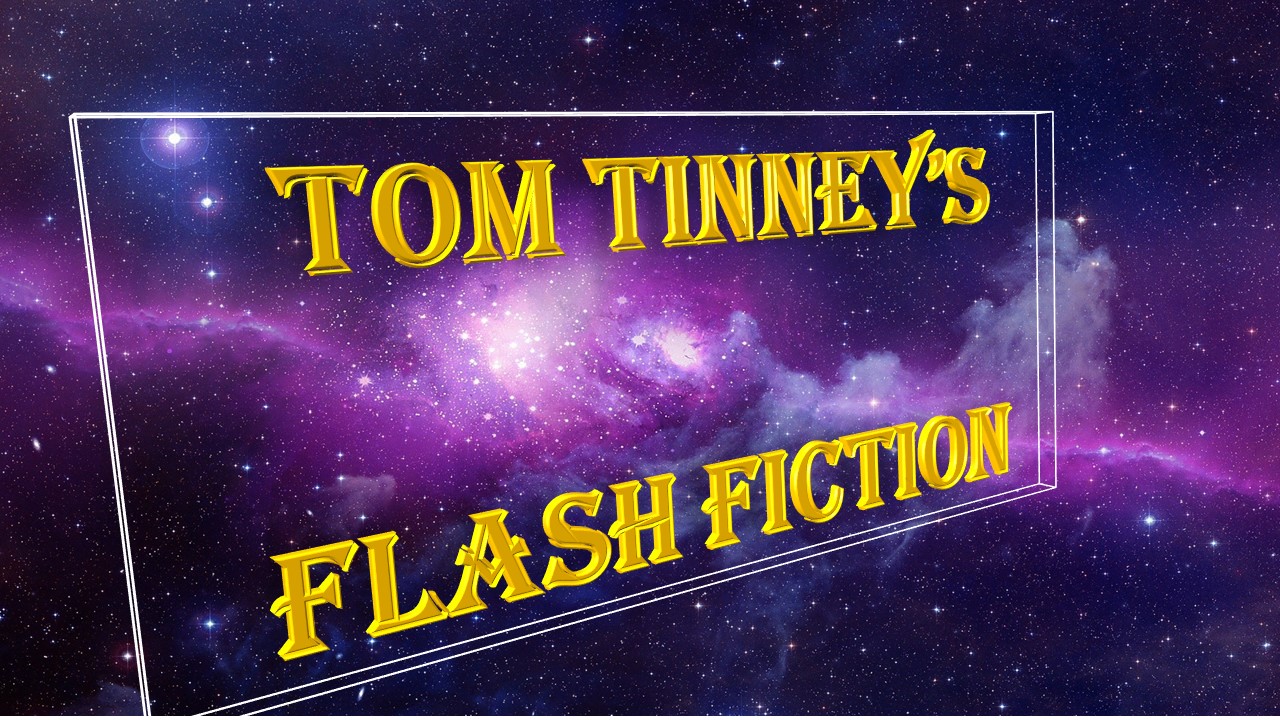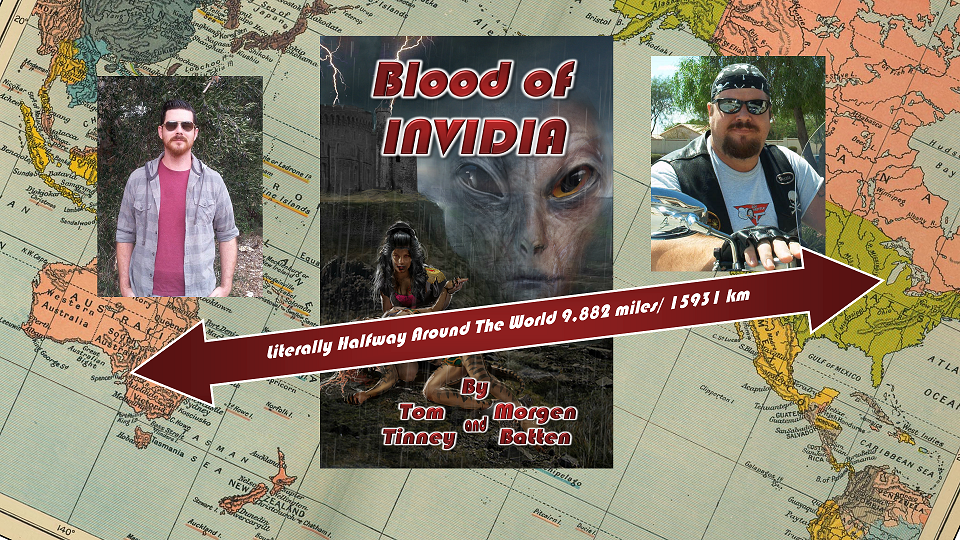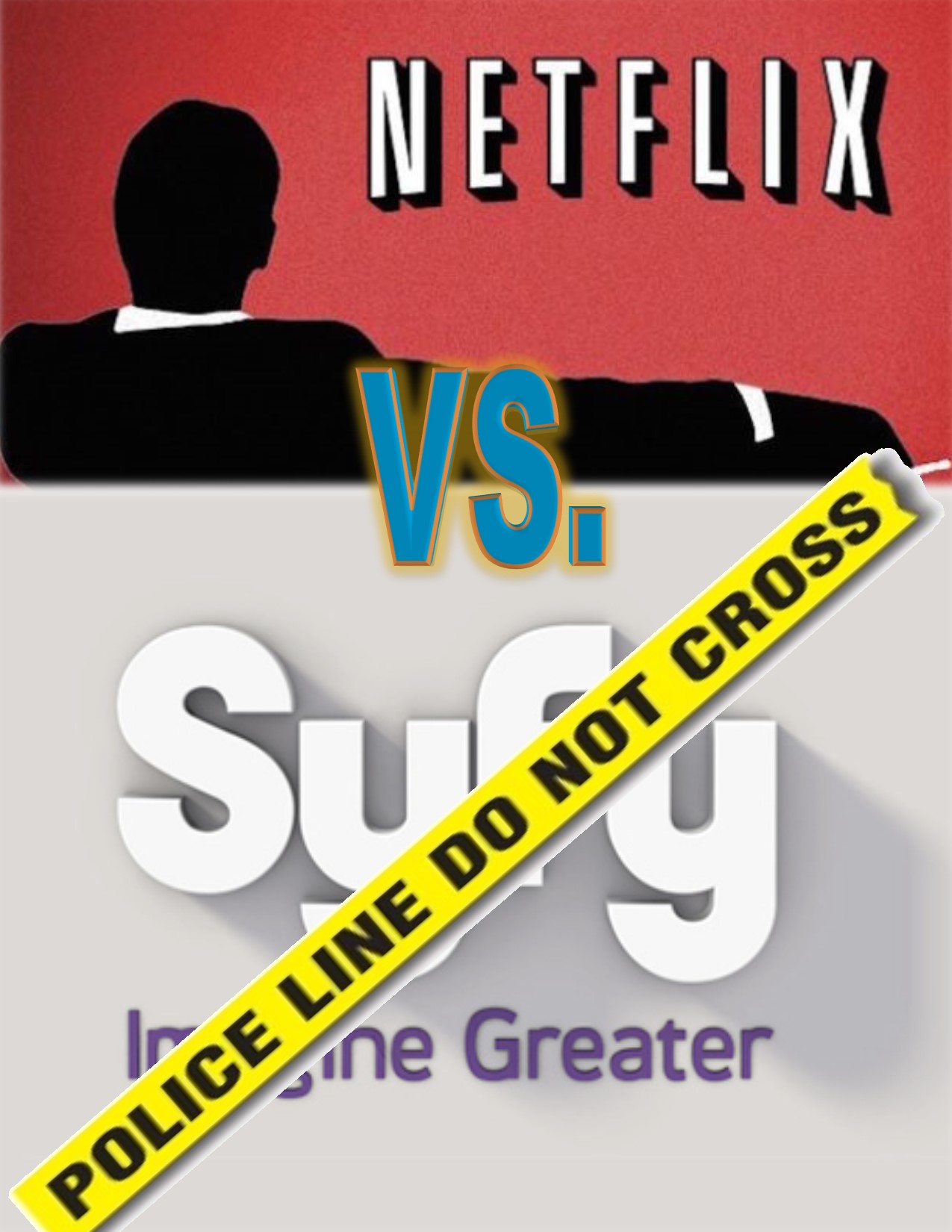 Friends and fans have asked me “How the hell do you come up with this stuff, much less write a book about it?”
Friends and fans have asked me “How the hell do you come up with this stuff, much less write a book about it?”
A fair question that has a few components. The first is the initial idea. I guess that is somewhat esoteric. For my “out of the blue” ideas, they may come from reading another book, watching a TV show, sitting in the park, reading an technical article or viewing a piece of art. Those just pop in there.
Let’s take “ManaTech: Mages”, one of my works in progress (WIP). It started when I was watching a documentary on Nikola Tesla’s life. One part of the show struck me in particular. In 1895, his workshop on 5th avenue in New York “mysteriously burned down”. My brain wandered far afield with plots, and ideas. Villains and motives. Alternate results and realities. And there it was, the beginning of “ManaTech: Mages”.
Good. An Idea. A basic plot and the beginnings of a world/alternate reality to build in. A couple of realizations right off were that the main character needed to be an observer or someone I created, because Nikola Tesla and other famous people from the era needed to be observed by the reader. I could develop their voices over the series, but wanted to start with an “ordinary man” point of view. What had “Nicky” been working on in the lab that someone wanted to destroy? What if he’d built it and something fantastic had happened? Who else would he have had attend the event? Why stick to one genre with this? After the “event”, how would the world at the turn of the century have changed? What convoluted plots and story lines could spring from the event? How would it change history?
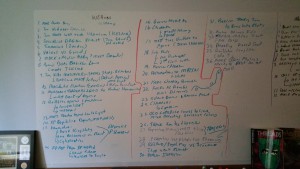 Time to go to the Whiteboard. Yes, Whiteboard. Some very cool paint (Ideapaint) turned one entire wall of the home office into a giant whiteboard.
Time to go to the Whiteboard. Yes, Whiteboard. Some very cool paint (Ideapaint) turned one entire wall of the home office into a giant whiteboard.
Using a color code and priority list, I scrawl down plots and arcs (Elves and Edison? Really? Yep), technologies (Mana made products that are created out of thin are), sketches of important items (Amulets and the Mana world connections) and characters. I may even start outlining chapters.
This process may take hours, days or weeks. Grinding through things when driving, writing on other projects or just staring off into space. A tweak here and there. Add another arc, discard one that is superseded.
When the overall project starts to gel in my mind and on the board, I can see things happening with the characters, plots, action and the world (almost like internal animation). Numbering the scribblings and individual note lines helps put the book in order. At that point, the idea is ready to move to the spreadsheets.
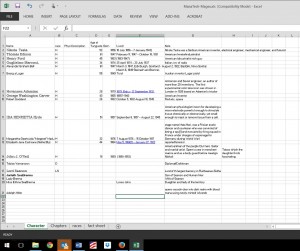 The book writing spreadsheets have various tabs to help manage the work. The “Characters” tab include basic info about them. Name, sex, age, profession, description (if needed), quirks, etc. As I write, I try to keep filling this in with new people that spring up. This has really paid off when work begins on the second book, since some of the people will move to that edition.
The book writing spreadsheets have various tabs to help manage the work. The “Characters” tab include basic info about them. Name, sex, age, profession, description (if needed), quirks, etc. As I write, I try to keep filling this in with new people that spring up. This has really paid off when work begins on the second book, since some of the people will move to that edition.
The “Fact Sheet” is filled with hyperlinks to reference pages, calculations, facts, biography’s, translators, drawings and so forth. It tends to be chaotic, but it allows me to return to where I found the original information that may be referenced or used in the book. It is also where any “Created” facts will be placed. In the case of “Blood of Invidia” ,this was also filled with the original text messages between the co-author and myself. Yes, we outlined that book via text message.
The “Chapters” tab is where I put chapter titles, in order, and brief outlines of the chapters relating to the plot arcs from the white board. This lets me “cut and paste” the order of the chapters as I proceed, as well as allowing me to back check that the major and minor plot arcs were covered (or need to be moved to another chapter).
Now begins the writing. I have a template for a 6” x 9” book format that I have setup. It started from the one provided by Createspace for MS Word, but I’ve since modified the hell out of it to produce a top notch template to produce a printed book and with ONE alteration, produce the Epub (Kindle) version. Indie Authors have to assume many roles in the production of their work, so anything that smooths the process and provides professional quality, with minimal effort, is always a good thing.
I write in the template to get a “feel” for how the printed book will come out. Total pages and pages per chapter. Since I don’t have plans to submit to a publisher, there is no need to produce the typical 8” X 11” double spaced version that agents and editors like. That eliminates the effort that would be required to convert it back to a workable format to print or publish as Epub.
As for the actual writing process, for me, it comes very naturally. I hear the conversations, see the world and live the actions. Describing them is almost second nature. As I feed the chapter’s ideas, the writing takes on a life of its own. A new character may spring into being that lets me weave together other plot points. Another event becomes more significant, or a connecting point for the next book in the series. I would like to take credit for some grand plan where everything comes out in some brilliantly organized stream, but the fact is that the creative process takes on a life of its own. I enjoy being surprised by what jumps up off the pages and what it allows me to do next.
That goes to a tip. What I have learned is that the author must drive through with the writing. No stopping to “massage” each sentence and paragraph as we attack the keyboard. That will drag out the book forever and really create an unreadable monstrosity, since each bit wants to stand on its own and not flow into the next bit. Write a chapter or three and then go back to smooth the work. That also lets the author make sure they’re not wandering to far afield from key plot points.
 A tech tip here, for you aspiring author types, USE DROPBOX!! (or some other compatible service) to store your active drafts. Save often to the Dropbox. Why Dropbox? Well, I can access it from my Note 4 smart phone, my Surface Pro when traveling or from my notebook at home. The same work at the same process point on multiple drives. If I lose it on a hard drive, no big deal, since it is on three other drives in the same condition (One in the cloud). This has seriously reduced the opportunity for me to really screw something up or lose valuable content due to a crash.
A tech tip here, for you aspiring author types, USE DROPBOX!! (or some other compatible service) to store your active drafts. Save often to the Dropbox. Why Dropbox? Well, I can access it from my Note 4 smart phone, my Surface Pro when traveling or from my notebook at home. The same work at the same process point on multiple drives. If I lose it on a hard drive, no big deal, since it is on three other drives in the same condition (One in the cloud). This has seriously reduced the opportunity for me to really screw something up or lose valuable content due to a crash.
The cloud based box also allows your editor and co-authors to access the work and contribute. Which brings us around to tip number two…separate folders for separate chapters. That way, you can be writing in chapter 18, while your editor is in chapter 4 and your co-author is in chapter 9…and you never crash into each other’s revisions. Their latest input updates to your Dropbox when they hit save.
Going back and forth between my tools allows me to bounce around with the writing or plow straight through large sections. When feeling “uninspired” I can write in another section, or another work entirely, until the ideas start bubbling for the section giving me trouble.
There are very few more satisfying moments than when you type the last sentence of a book, tying together and finalizing all months of effort. There is still a pile of work to get it ready to publish, but it is an accomplishment unto itself.
Hope you enjoyed the peek inside the process.

